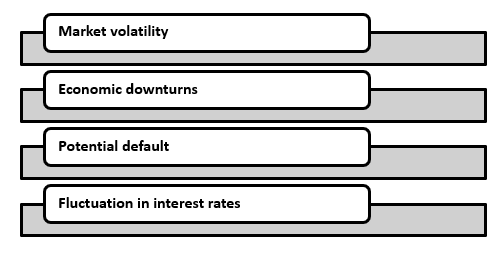Definition
Related Definitions
Liquidity Premium
What is Liquidity Premium?
Liquidity premium refers to an additional amount that is needed to boost investment in securities that cannot convert into cash at fair market value easily. It is the premium demanded by investors when a security is difficult to convert into cash at fair market value. If a security has a high liquidity premium that means a security is considered to be illiquid. Because of illiquid securities, investors generally ask for additional compensation due to an additional risk associated with a security’s investment for a long term period. The valuation of securities fluctuates with the market effects that means security long term investment have higher chances to get affected, and the risk is higher.
Summary
- Liquidity premium refers to an additional amount that is needed to boost investment in securities that cannot convert into cash at fair market value easily.
- The valuation of securities fluctuates with the market effects that means security long term investment have higher chances to get affected, and the risk is higher.
- Investors who invest in illiquid assets require compensation for the added risk of investing their money in assets that may not be able to be sold for a long period; mainly the value of an asset can vary with the fluctuation in the markets.
Copyright © 2021 Kalkine Media
Understanding Liquidity Premium
Investors mainly prefer to invest in less risky assets that are more liquid in nature. For illiquid assets, investors demand for extra amount as compensation for the additional risk of making an investment in assets that cannot be sold at fair market value easily. Investors who invest in illiquid assets require compensation for the added risk of investing their money in assets that may not be able to be sold for a long period; mainly the value of an asset can vary with the fluctuation in the markets.
Liquid investment or asset refers to the asset that can be converted into cash at its fair market value quickly such as short-term Treasury bond, savings account, stocks and so on. The returns might be low in liquid assets’ investment, but the money of an investor is safe due to low risk. There are many bonds considered as liquid assets because they are quickly convertible and can be sold on a secondary market.

Copyright © 2021 Kalkine Media
Whereas, illiquid investments or assets are just opposite of liquid Investments as illiquid investments face difficulties to be sold at their fair market value and involve high risk, it includes certain loans, certificates of deposit, annuities, real estate, debt instruments and so on. The illiquid investments do not have any active secondary market that can be used to sell an asset at fair market value. The liquidity premium is put up into the returns on the illiquid asset long term investments in order to compensate the additional risk an investor takes in locking up its funds for a long time period.
In other words, we can say that investors who invest in illiquid assets required to be compensated for the extra risks of investing in illiquid assets. Generally, investors with huge capital opted to invest in long term assets or investments in order to get benefits from these investments in a form of earned liquidity premium. A liquidity premium rewards investors for investing in assets/ securities which have low liquidity.
Frequently Asked Questions (FAQs)
Why do liquidity premiums exist?
Illiquid investments are more risky in the comparison of liquid investments or assets. With investing in illiquid investments or assets, investors rewarded with additional amount for the added risk of securities investment that are difficult to be sold at fair market value easily. Therefore, investors who hold a single asset for a long time period faces the various risks including:

Source: Copyright © 2021 Kalkine Media
- Market volatility: One of the major reasons of liquidity premium existence is to provide compensation against the additional risk of illiquid investments. Because of unforeseen nature of market, an investor cannot make assumption or prediction. The price of securities may fluctuate with the changes in the market. The reasons of market fluctuations may include political factors, economic factors, economic news, and fiscal policy.

- Economic downturns: An economic downturn may refer to the slowdown in the activities of an economy such as recession. An economic downturn has a direct impact on an illiquid investment and cause the higher risk for an investor. Liquidity premiums are demanded by investors to compensate these kinds of risks.
- Potential default: Potential default defines the situation that may lead a default on a loan. Liquidity premiums do exist for rewarding investors from such kind of risk factors.
- Fluctuation in interest rates: Interest rates refer to the rates at which the supply and demand of credit is based. A rise in the demand of credit may cause the rise in interest rates and vice versa. The interest rates fluctuate with the change of demand and supply of credit or money in an economy or market. This fluctuation in interest rates increases the risk associated with an illiquid investment, and liquidity premiums are used to compensate this risk.
